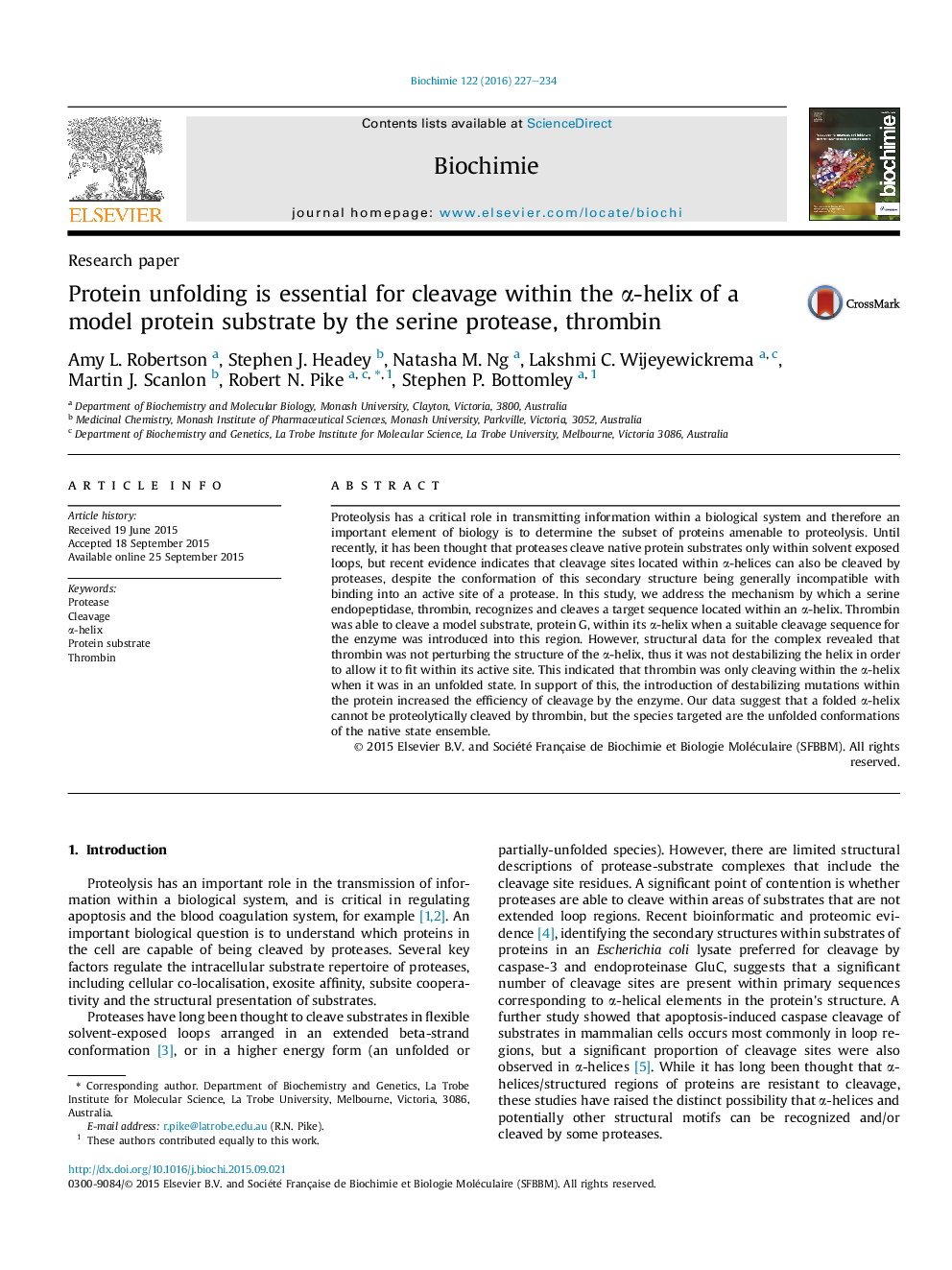| Article ID | Journal | Published Year | Pages | File Type |
|---|---|---|---|---|
| 8304480 | Biochimie | 2016 | 8 Pages |
Abstract
Proteolysis has a critical role in transmitting information within a biological system and therefore an important element of biology is to determine the subset of proteins amenable to proteolysis. Until recently, it has been thought that proteases cleave native protein substrates only within solvent exposed loops, but recent evidence indicates that cleavage sites located within α-helices can also be cleaved by proteases, despite the conformation of this secondary structure being generally incompatible with binding into an active site of a protease. In this study, we address the mechanism by which a serine endopeptidase, thrombin, recognizes and cleaves a target sequence located within an α-helix. Thrombin was able to cleave a model substrate, protein G, within its α-helix when a suitable cleavage sequence for the enzyme was introduced into this region. However, structural data for the complex revealed that thrombin was not perturbing the structure of the α-helix, thus it was not destabilizing the helix in order to allow it to fit within its active site. This indicated that thrombin was only cleaving within the α-helix when it was in an unfolded state. In support of this, the introduction of destabilizing mutations within the protein increased the efficiency of cleavage by the enzyme. Our data suggest that a folded α-helix cannot be proteolytically cleaved by thrombin, but the species targeted are the unfolded conformations of the native state ensemble.
Related Topics
Life Sciences
Biochemistry, Genetics and Molecular Biology
Biochemistry
Authors
Amy L. Robertson, Stephen J. Headey, Natasha M. Ng, Lakshmi C. Wijeyewickrema, Martin J. Scanlon, Robert N. Pike, Stephen P. Bottomley,
